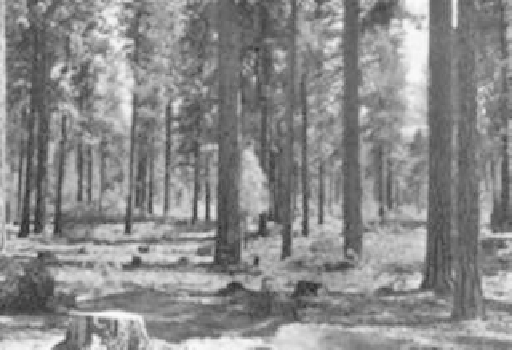Environmental Engineering Reference
In-Depth Information
native Gila and Apache trout and, in the case of rainbows, breed with them, thereby
diluting the gene pool. Bass, catfish, sunfish, other game fish, and bullfrogs have been
deliberately planted in the Sky Islands region's warm-water streams and reservoirs where
they are direct threats to native fish and frogs. Bait fish and crayfish also have spread and
threaten aquatic natives. Bullfrogs are the primary threat to native frogs. Rosen et al. state,
“In the American Southwest, the native fish fauna is … facing extinction due primarily
to introduced predators and competitors.”
44,45
Fifteen non-native fish species are estab-
lished.
46
Among invertebrates, feral and domesticated honeybees aggressively compete for
food with native bees, which may be vital to the pollination of native plants.
47
In parts of the Sierra Madre, the larger Texas white-tailed deer has been introduced in
the range of the smaller Coues white-tailed, with potentially disastrous consequences
for the native subspecies through interbreeding. The size difference between the subspe-
cies is such that a female Coues can die while giving birth to a Texan hybrid.
48
European
wild boars have been introduced in the Sierra Madre Occidental, competing with the
smaller white-collared peccary and damaging the fragile soil of the arid forests of the
region.
49
10.2.6 Wound 6: Degradation of Forests and Woodlands
Causes: Degradation of forests is closely related to some of the wounds already discussed,
especially Wound 3, elimination of natural fires. Beginning in the 1870s with (1) cutting for
mine timbers, railroad ties, and firewood and continuing to the present day with (2) industrial
saw timber operations, all forest types in the region have been degraded (Figure 10.7).
Bahre
26
reports that more than 30 mining centers operated in the Arizona portion of
the Sky Islands in the late 1800 s. Wood was the sole fuel for the mines and for all other
uses. Madrean evergreen woodlands, mesquite bosques, and riparian woodlands were
heavily exploited. Bahre also reports that significant saw timber logging occurred in the
Graham, Chiricahua, Huachuca, Santa Rita, and Santa Catalina mountains during the late
1800s. A sawmill was located in the Santa Ritas as early as 1857. “Nearly 30 percent of the
ponderosa pine (
Pinus ponderosa
) and mixed-conifer forest in the Chiricahuas had been
logged by eleven different sawmill operations before 1900.”
26
FIGURE 10.7
Timber harvest, especially historic tree cutting, can reduce habitat quality by changing vegetation strata.


Search WWH ::

Custom Search